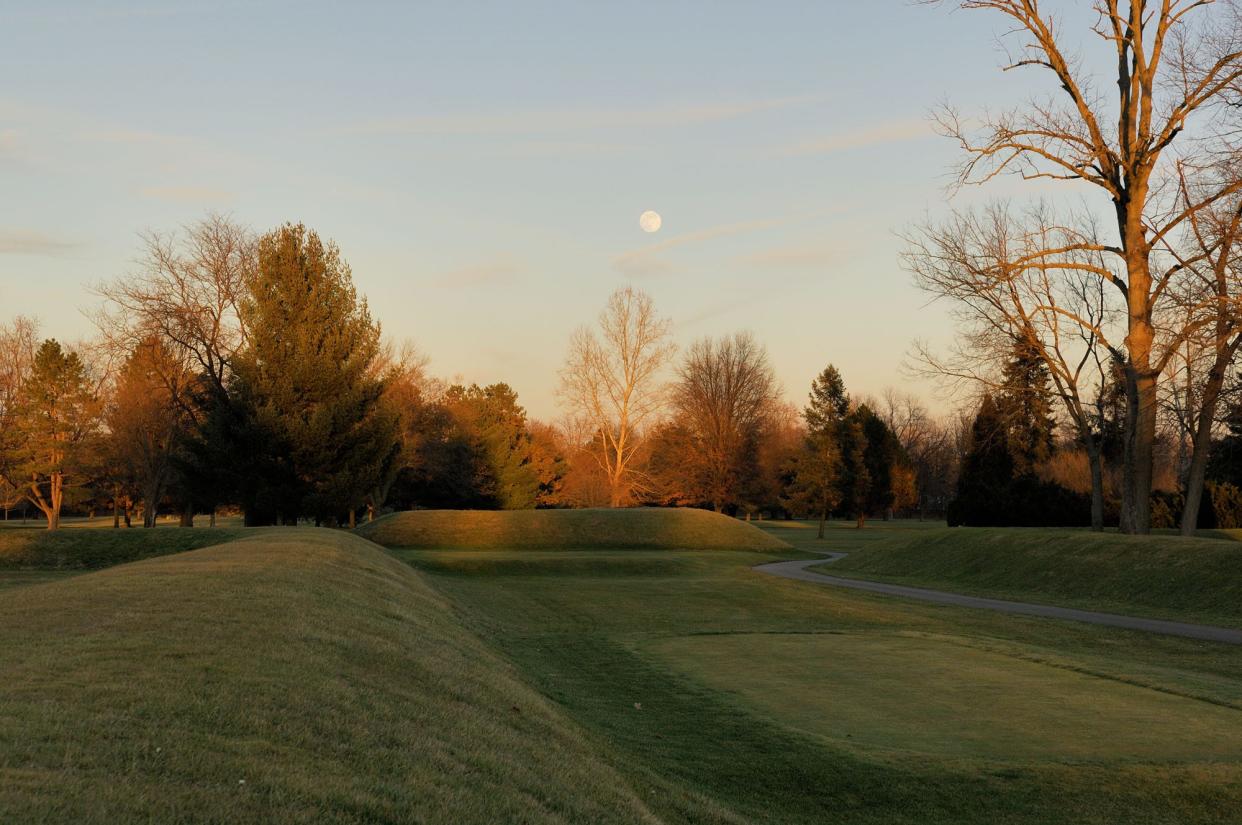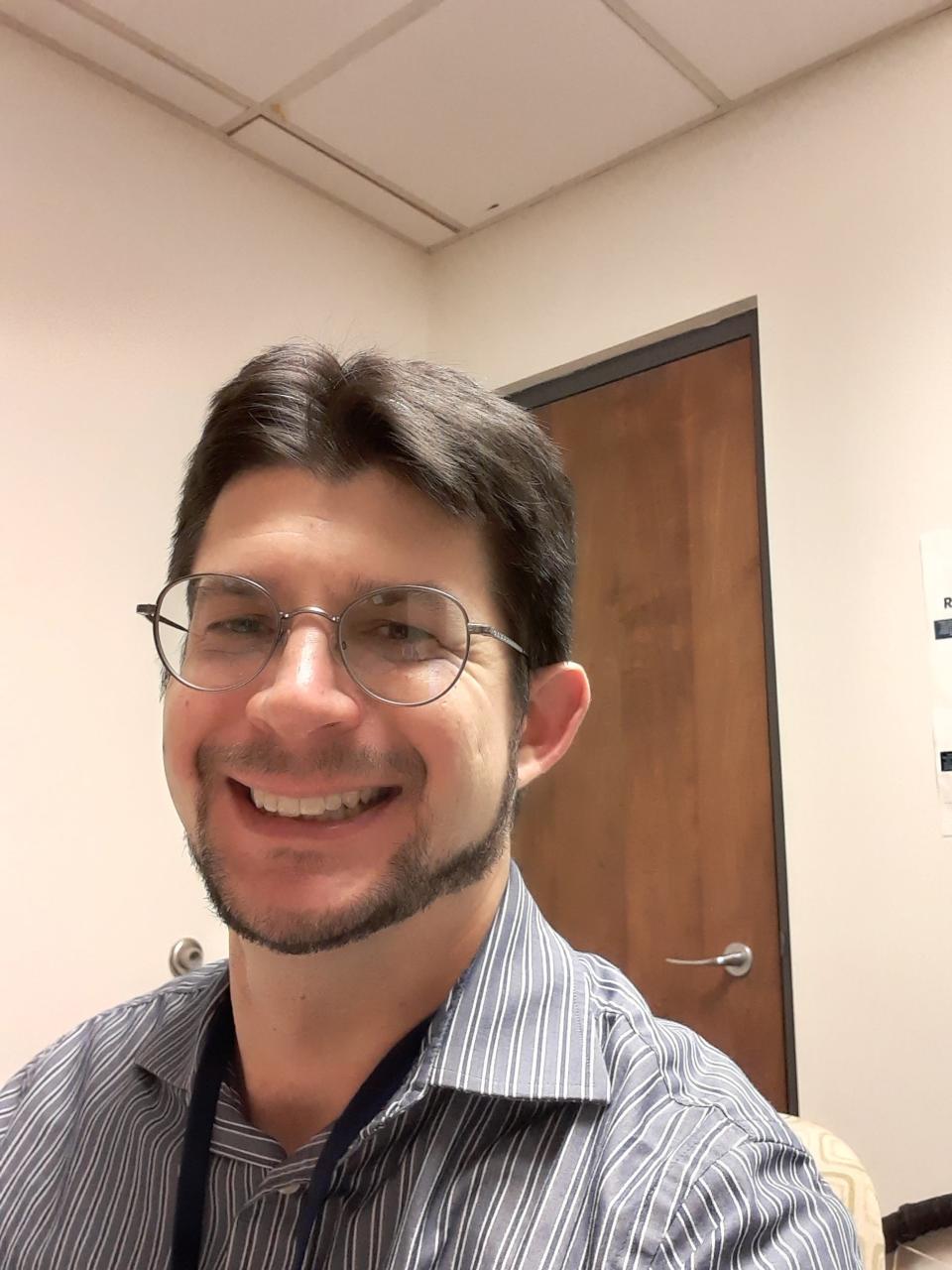Jordan: Experiencing seasons and waterways with the ancient Hopewell people

A bonus to being Flint Ridge’s site manager is seeing the seasonal changes at the park and on my approach along State Route 668.
Spring brings such a vivid array of colors as the barren trees gain yellowish and pale green tints before bursting with the pink of red buds or white blossoms. In summer, the bushy darker green boughs contrast magnificently with the deep blue sky and fluffy cumulus clouds. Autumn’s red, orange, and yellow leaves blaze even on overcast days, in places practically forming golden tunnels. Even winter has its own unique beauties with the frostings of snow against trunks and branches or the glinting ice encasing trees after a sleet storm.
I also am lucky that on the days I commute to Zanesville for the teaching I do at its Ohio University and Zane State College campus State Route 146 mirrors these seasonal changes. Portions of 146 run adjacent to the Licking River, and I’m amazed to realize that as different as my car is to a dugout canoe, many of the sights along these parallel courses would have been similar for ancient indigenous people coming into the area by waterway.
Rivers were superhighways for the ancient world. The Hopewell Interaction Sphere—an area of influence for the Newark Earthworks’ builders that covered the eastern half of the continent, plus an arm going to Wyoming—is defined partly by rivers. Throughout Ohio, indigenous sites sit along waterways. Marietta and Portsmouth were once major earthworks centers. The hilltop enclosure Fort Ancient looks down on the Little Miami River. The six sites managed by Hopewell Culture National Historical Park are just a few of the dozens of earthworks clustered along twelve miles of the Scioto River in what is now Ross County.
Closer to what central Ohioans call home, areas around the Licking River show several signs of its use by ancient peoples. Black Hand Gorge is one of these places. The cliff face where the Black Hand petroglyph was once carved overlooks the Licking River. Council Rock, the area above this cliff, has associations with Flint Ridge because flint chips from the quarry are scattered across the ground, indicating a workshop. The thought of ancient people paddling into Licking County and being greeted by the “chink, chink, chink” of knappers shaping the flint is captivating. Equally intriguing is the thought of knappers looking up to see dugout canoes from distant lands making their way up the river.

Following the Licking River upstream toward its source goes past the Newark Earthworks. The Licking’s South Fork cuts past the area where the Cherry Valley Ellipse once stood, and parallel walls once stretched down from the Ellipse as an entryway into the whole earthworks complex. Flowing into the South Fork from the north is Raccoon Creek, and another pair of walls formed a walkway that ran east-west and reached down to the creek from the Octagon site. Also flowing into the South Fork of the Licking is Ramp Creek. A third set of walkway walls stretched southwest from the Octagon to it.
It’s easy to see the practicalities of the rivers for ancient people, but there probably were deeper dimensions to how they understood them. The Great Circle’s moat points toward the place of water in the ancient mythology. Although we can’t know these stories, we may be able to get some sense of their emotional resonance by pausing to appreciate the seasonal beauties of Licking County and its rivers.
Dr. Tim Jordan has worked various positions in interpretation and site management for Flint Ridge Ancient Quarries and Nature Preserve and the Newark Earthworks. He is also on the English faculties of Ohio University Zanesville and Zane State College and is a seminarian at Trinity Lutheran Seminary.
This article originally appeared on Newark Advocate: Jordan: Experiencing the seasons with the ancient Hopewell people

